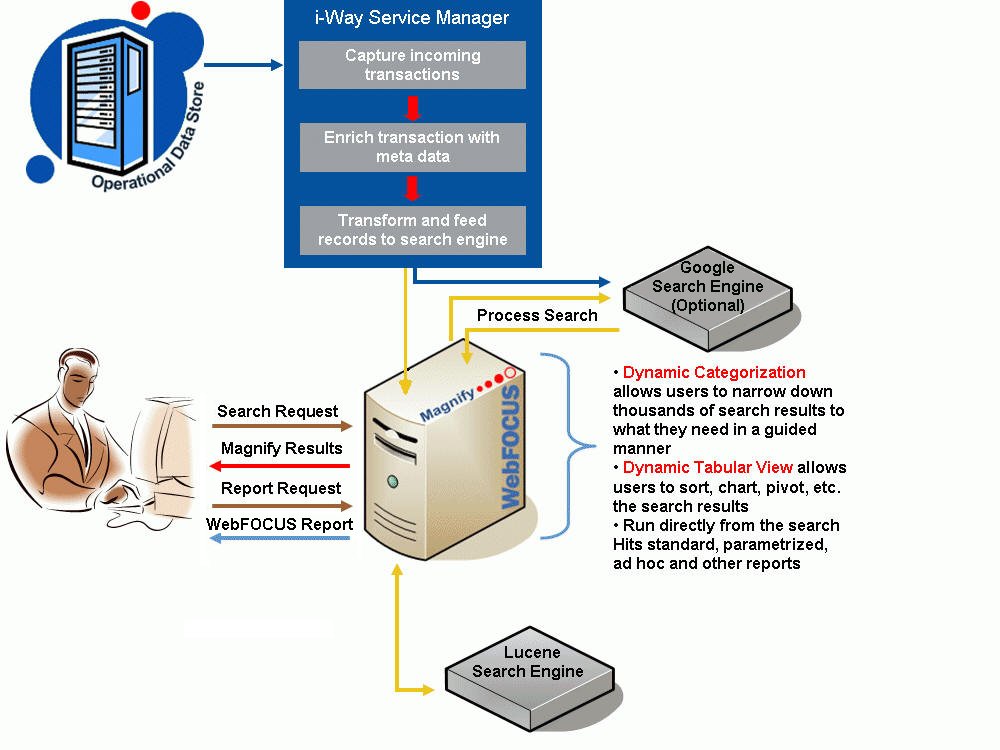
At a high-level, iWay Service Manager monitors your data source and feeds the information that you have designated for searching to a search engine, which indexes this information. When a search request is made, the search engine returns relevant information from the indexed content to Magnify.
The listener, contained in an iWay channel, is designed in the Service Manager Console to monitor the data source that holds the information you want made available to search. The listener detects changes to the data source and sends a record of this information in an XML document through the channel to an iWay process flow.
You will design the process flow using iWay Designer to process and enhance the information with metadata that Magnify can use in retrieving and presenting search results. This metadata includes the data source fields that hold relevant data, titles for the search result links, images to appear with a link, and the WebFOCUS reports you want run from a link. A transformation is designed (using the iWay Transform tool) to convert the incoming XML document to an HTML document required by the search engine. The process flow then feeds the HTML document to the search engine, which indexes the information for searching.
You have the option of using Lucene™, which comes with Magnify, or the GSA as the search engine. In either case, the process flow includes search engine configuration parameters to direct the indexing process.
The Magnify user experience takes place through a Java Web application. You have the ability to design many elements of the interface through a style sheet. By clicking the links on the search results page that were configured in the process flow, a user can access relevant information from an enterprise, including dynamically created WebFOCUS reports. For a tour of the user interface, see the Magnify End User Manual.
The following diagram shows the interaction between the major components associated with Magnify.

| WebFOCUS |